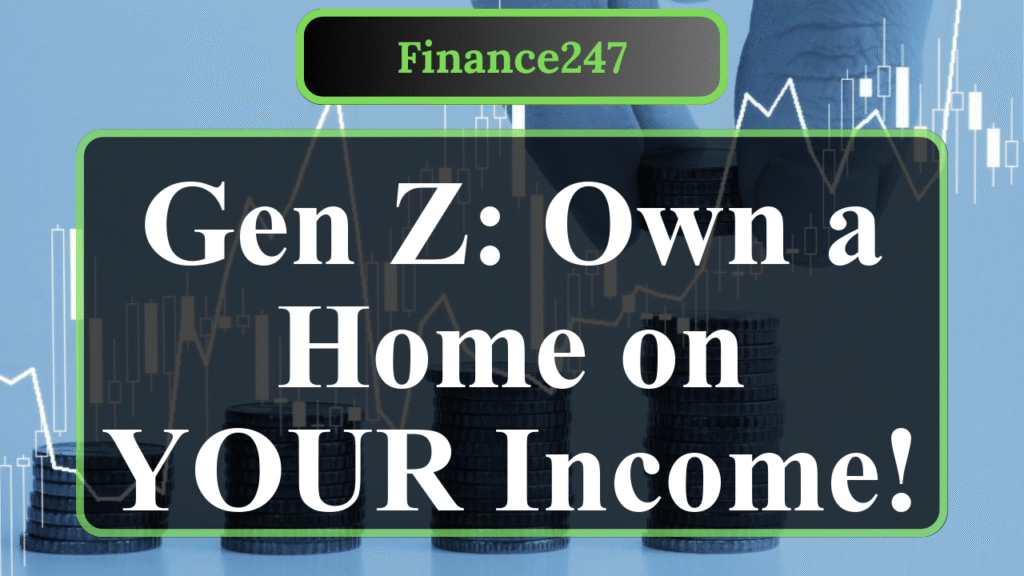“With soaring home prices and high interest rates, homeownership feels out of reach for many Gen Zers. This article outlines six actionable strategies to navigate the U.S. housing market on a Gen Z income, including budgeting, exploring affordable markets, leveraging assistance programs, and creative financing. These tips empower young adults to achieve the American dream of owning a home despite economic challenges.”
Strategies for Gen Z to Achieve Homeownership
1. Build a Strict Budget and Prioritize Savings
Gen Zers, typically aged 18–28, often face financial hurdles like student loans and entry-level salaries. The median weekly salary for workers aged 16–24 is $746, or roughly $38,792 annually, while those aged 25–27 earn about $57,564. To afford a home, create a detailed budget that allocates at least 20% of income to savings. Use apps like YNAB or Mint to track expenses, cut non-essentials like frequent dining out, and aim to save $300–$500 monthly for a down payment. For a $200,000 home, a 10% down payment requires $20,000, achievable in 3–5 years with disciplined saving.
2. Explore Affordable Housing Markets
Home prices vary widely across the U.S. In 2024, median home prices in Mississippi were $141,900, while California’s hit $684,800. Gen Z buyers are finding success in affordable metros like Pittsburgh ($165,000 median), St. Louis ($185,000), and Indianapolis ($225,000). Remote work, embraced by 60% of Gen Z, allows flexibility to relocate to lower-cost areas while maintaining urban job salaries. Research markets with lower price-to-income ratios, like Minnesota, where 50.8% of under-35s own homes.
3. Leverage First-Time Homebuyer Programs
Government and nonprofit programs can reduce upfront costs. FHA loans require just a 580 credit score and 3.5% down payment, compared to 620 for conventional loans. In 2024, 8% of Gen Z buyers used government grants or assistance programs. Programs like the USDA loan for rural areas or state-specific down payment assistance can cover 3–5% of the home price. Check HUD’s website or local housing authorities for eligibility.
4. Consider House Hacking for Extra Income
House hacking—buying a multi-unit property and renting out part of it—is gaining traction among Gen Z. A Zillow survey found 54% of young buyers are open to this strategy. For example, purchasing a duplex for $250,000 and renting one unit for $1,200 monthly can offset a $1,892 mortgage payment (6.88% rate, 30-year term). This approach reduces financial strain and builds equity, especially in affordable markets like Cincinnati or Detroit.
5. Improve Credit and Manage Debt
A strong credit score (680–739) secures better mortgage rates, saving thousands over a loan’s life. Gen Z’s average student loan debt is $37,000, eating into savings. Pay down high-interest debt (credit cards, student loans) to keep your debt-to-income ratio below 36%, a lender benchmark. Make on-time payments, avoid new credit lines, and check your score via free tools like Credit Karma to boost it before applying.
6. Seek Family Support or Co-Buying Options
In 2024, 18% of Gen Z buyers received family financial help, and 11% bought properties from relatives at discounted rates. Co-buying with a partner, friend, or family member pools resources for a larger down payment or better loan terms. Alternatively, 31% of Gen Z live with parents to save on rent, contributing 22% to household income while building savings. Discuss clear legal agreements for co-buying to avoid disputes.
Disclaimer: This article provides general financial tips based on current U.S. housing market data and trends. Consult a financial advisor, mortgage lender, or real estate professional for personalized advice. Information is sourced from reputable publications and industry reports.


